“Those who can, do.”
If you go to Madagascar someday, you might find these words by famed writer George Bernard Shaw echoing through your mind, as the country’s creative character reveals itself to you in its rough, muddy, earthen ways. The people here are incredibly resourceful and inventive, because they must be. They craft, they make, they shape, they do.

A sailboat made of balsam.
In the West, there is a “maker culture” that is thriving and trendy. It spurs innovators to dream up solutions that technology makes possible and profitable. It’s exciting to watch and support.
But there is a different kind of maker culture in Madagascar, where people combine tradition with need, plus entrepreneurial vision, to make useful and beautiful things from almost nothing. This maker culture isn’t underwritten by venture capital or powered by innovation labs, but is, rather, driven by the mother of all invention: necessity.
One of the first and most ubiquitous scenes here, driving from the capital of Antananarivo toward outlying villages, is the outdoor warehouses of handmade clay bricks — stacking, burning, and advertising their strength. It’s like aisles upon aisles of Home Depot or IKEA, splayed out for sale in the open.

These bricks are hand-forged by specialized brick makers who excavate red clay from the earth.
Similar to concrete cinder blocks in appearance, these bricks are hand-forged by specialized brick makers who excavate red clay from the earth, and then hand pack it into moulds. Rows upon rows, stacks upon stacks, from the banks of rice paddies to the sides of roads, you’ll see tightly packed clay bricks slow smoking in the sun, with rice husks burning in between them to harden their core.
Moving south several hours from the capital, you might visit the makers of Ambatolampy, renowned for their hand-forged cookware. From large stovetop crockpots to miniaturized sugar and spice bowls, these matte aluminum goods can be seen in street markets, restaurants, and homes across the country.
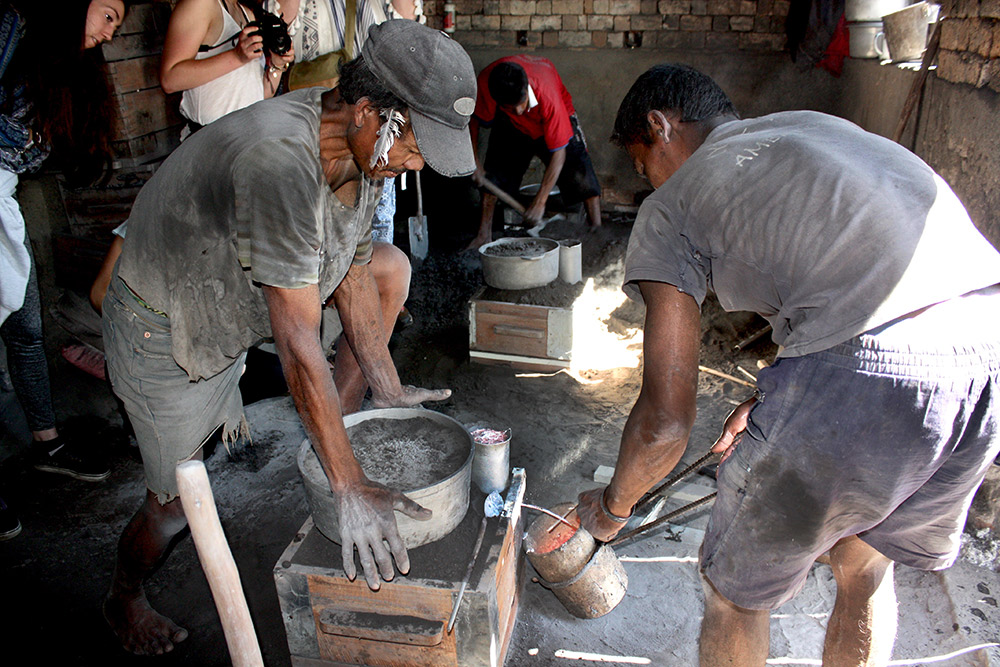
Here, workers melt down aluminum so it can be made into something new again.
These aluminum foundries are famous, and to a visitor’s eyes, a blend of marvel and danger. Seasoned craftspeople and young apprentices use very basic tools along with blazing heat to reinvent those items that no longer have use. Car parts, machine parts, cans, and building materials are melted down at high heat in outdoor pits, filtered and then poured into lava-hot moulds, to create the signature pots and lids that are buffed, shined, and distributed for sale.
There is precious little protective gear to be seen, or technology to speed the process; just handcrafted skill, perfected by years of practice. It’s both intimidating and impressive to watch.
If heavy-duty cookware isn’t your thing, you might enjoy seeing makers with a finer touch. Olivier is a stylish artist whose father taught him how to turn trash into mini treasures that delight both collectors and children.
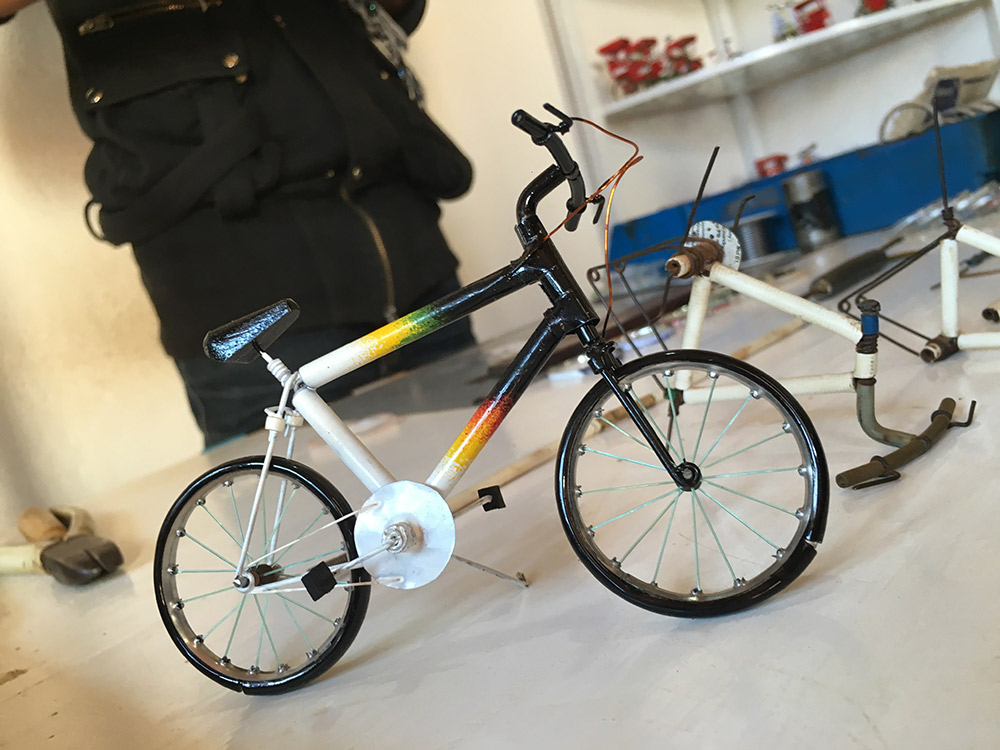
These tiny model bicycles are fashioned from recycled materials.
Tiny model bicycles, trucks, and hand-pulled “pousse-pousse” rickshaw carts are fashioned from recycled materials, then sold for the equivalent of about USD $3–8.00 apiece. That’s no pocket change in a country like Madagascar, where 90 percent of the people live below the poverty line, according to the World Bank. It’s good income with low overhead.
Sitting in Olivier’s show studio, you’ll become player in a mystery game of “guess these materials.” Soda-can tops and bottoms are repurposed for wheel frames, fishing line is used for wheel spokes, medical tubing for the tires. His small, detailed movements finish off each creation with brightly coloured paint, before he gently packs purchases into recycled water bottles to protect them during transit.
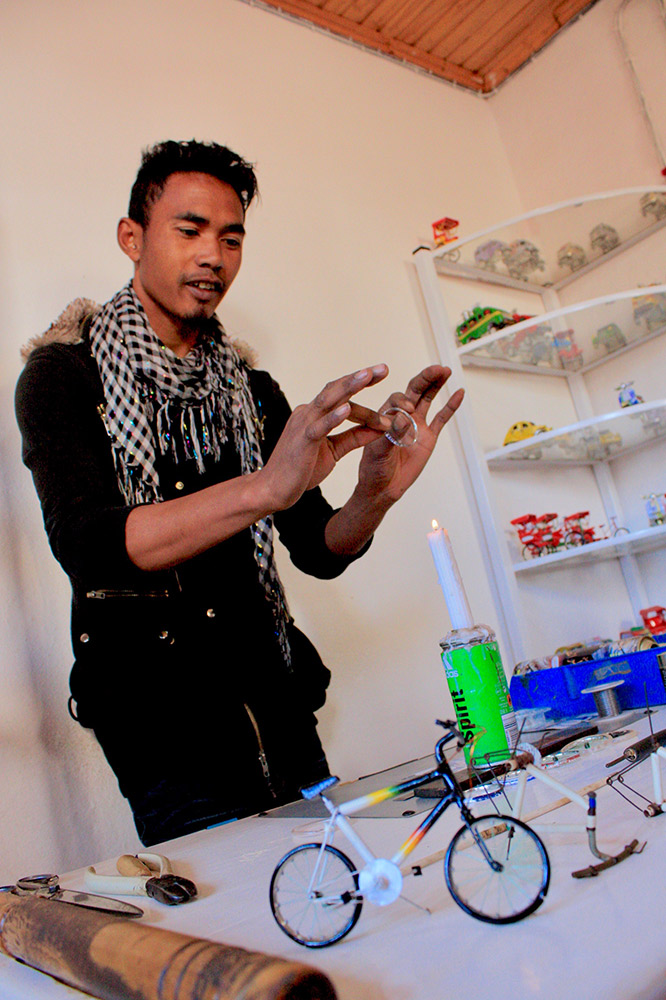
Olivier explains his process.
Recycle, reuse, enjoy.
Then, there’s the truly mind-bending array of creations from a totally different resource: zebu horns.
If, like me, you hadn’t heard of zebus before, they’re humped cattle that are, in Malagasy culture, like the horse to the cowboy, the goat to the herder, or the cow to the nomadic farmer. An estimated 19 million zebus here represent wealth, health, and status, and are used for everything from hauling heavy loads, to plowing fields, and filling wedding dowries. Zebu meat is prized for its nutrition and taste, and the animal’s horns, like all other parts, are used to their maximum capacity.
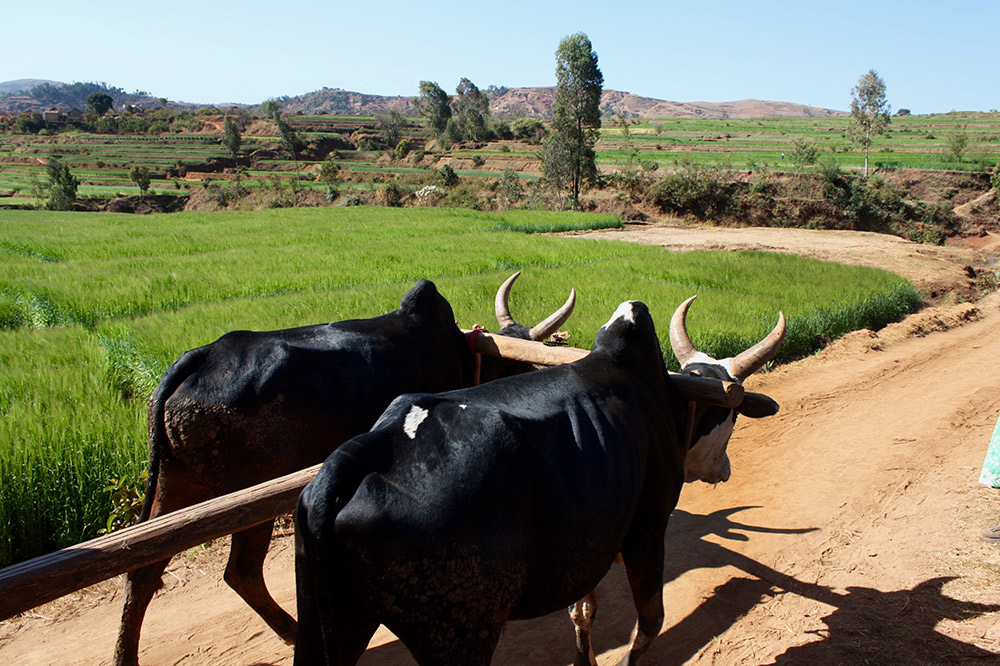
There's 19 million zebus in Madagascar.
You can visit a zebu horn crafts market to watch demonstrations of the process of melting, hammering, shaping, and polishing these keratin materials into shiny marvels of invention. (The horns are harvested from deceased zebu that have either died naturally or been slaughtered for meat, ensuring no part of the animal is wasted.)
The results range from smooth cutlery to chunky jewelry and delicate figurines. As we watched, a young man silently buffed his creations with a spinning wheel wrapped in scraps of denim. That apparently common resource provides just the right texture to bring a horn craft to shine!

As we watched, a young man silently buffed his creations.
Wherever you go in Madagascar, you’ll see signs of resourcefulness and inventiveness hard at work: artisans crafting scenes from lumber scrap shavings; women pressing wildflowers into colourful paper goods; fishers carving dugout canoes from balsam trees.
There is definite challenge in this island of natural wonders; but there is also a maker’s eye hard at work, finding solutions and crafting inventions from the resources that are available.
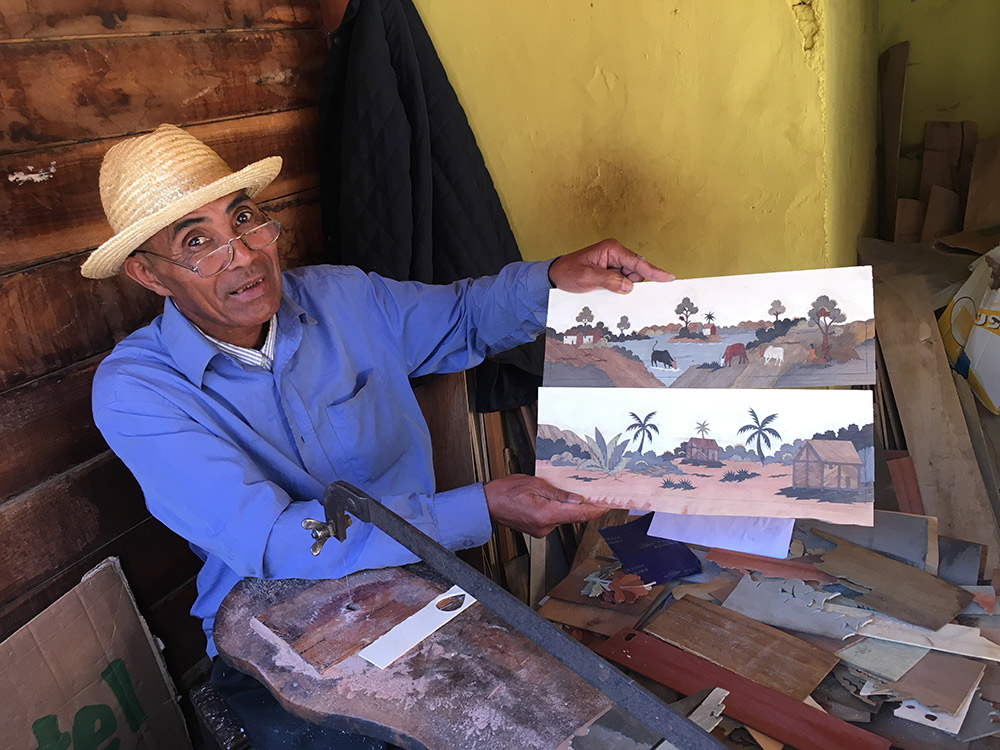
This artist creates his landscapes out of scrap lumber.
There is definite challenge in this island of natural wonders; but there is also a maker’s eye hard at work, finding solutions and crafting inventions from the resources that are available.
Madagascar is just beginning to come out of a period of political and economic isolation that terribly handicapped its development. But the World Bank Group has pledged $1.3 billion over the next three years to support its recovery, and tourists are beginning to bring their curiosity and vacation dollars.
There is certainly much progress that needs to happen here. But the talents and inventiveness of the Malagasy people lead me to believe that these makers have what it takes to succeed.
Getting There
G Adventures runs a number of departures in Madagascar encompassing a wide range of departure dates and activities to cater to different tastes. We’re thrilled at the prospect of showing you this big blue planet of ours — check out our small group trips here.























